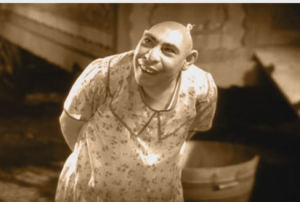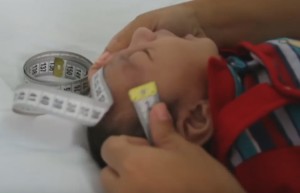The occurrence is not very common and it is estimated that it counts for about 2 to 12 in number out of 10,000 live births in the United States.
This condition can occur alone or in association with some other condition. Microcephaly can be associated with one or more of the following:
- Decreased learning ability and intelligence quotient
- Vision problems
- Hearing loss
- Compromised speech abilities
- Difficulty in swallowing and feeding
- Seizures
Microcephaly can be seen in association with one or more of these conditions in varying degrees of severity. In a few cases, the symptoms can even be life-threatening. In general, it is difficult to assess the possible complications of a baby born with microcephaly at birth. It is therefore important for the parents to take the baby for a regular check up and follow up, so that the associated conditions can be ruled out. Proper therapies, if given early in life can improve the overall quality of life of the infant.
This reduced development can be a result of many environmental or genetic factors. This condition does not have any treatment generally. The overall quality of life can be made better by having occupational and speech therapies for the affected child.
Symptoms
The determining feature of microcephaly is smaller head diameter than the standard range for that particular age and sex. The size of child’s head is measured by its circumference. This measurement is the compared with the standard values and is calculated in percentile. Some children can have small heads in general, and their percentile falls in the first category. A child with microcephaly will score less than first category in the percentile calculation. In fact it is much below the first category level. In children who have greater degree of severity, the forehead can also be seen sloping backwards.
Causes of Microcephaly
The exact cause is not known. In a few children, it occurs because of alteration in genes of the person. Some other reasons can be attributed to exposure of mother to some things during pregnancy like:
- Chronic malnutrition can be a major cause as the baby does not get enough nutrition for growth
- Certain infections, which can result in microcephaly as a result of infection in the mother
- Exposure to toxins and harmful substances during pregnancy
- Recently, it has also shown to have association with Zika Virus
- Insufficient supply of oxygen to the brain of developing foetus
- Cranoisynostosis is a condition where there is early fusion of the sutures between the bones of the skull. This results in obstruction in the growth of brain.
Diagnosis
This condition can be diagnosed before or after birth. If present before birth, this is diagnosed in ultrasound scanning. Microcephaly can be clearly detected in later days of second trimester or the third trimester.
After birth, the diagnosis is made by measuring the head circumference and comparing it to the standard values for the given age and sex. It is advised that the head circumference should be measured atleast 24 hours after the birth. This ensures that any compression during birth (i.e. passing of baby through birth canal) is restored to normal.
Once microcephaly is confirmed, further tests like CT scan and MRI should be done to assess the degree and locations of damage or less development in the brain structures.
Treatment
Craniosynostosis is a condition resulting in microcephaly, which can be treated surgically. Rest, microcephaly does not have any proper treatment. The treatment options aim at improving brain functioning and overall life quality of the patient. Occupation, physical and speech therapies are known to provide some benefits. The associated complications like seizures and hyperactivity should be dealt with medicines.
If a child is born with microcephaly to parents, it is important for them to consult a specialist before planning the second child. This can help them rule out the chances of developing microcephaly in the other child.
Microcephaly – Life expectancy
There is no confirming data regarding the life expectancy of a patient with microcephaly. There are cases which fail to survive for more than a year. While in some other cases, the patient survives for more than 35 years of age. It is very difficult for patients with microcephaly to survive without their guardian or caregiver. People need to plan everything about the child beforehand, in case the caregiver dies before the patient.


